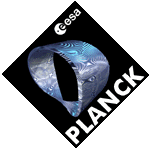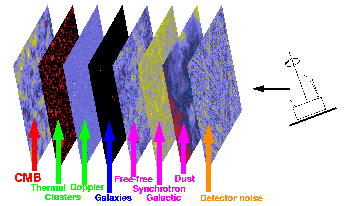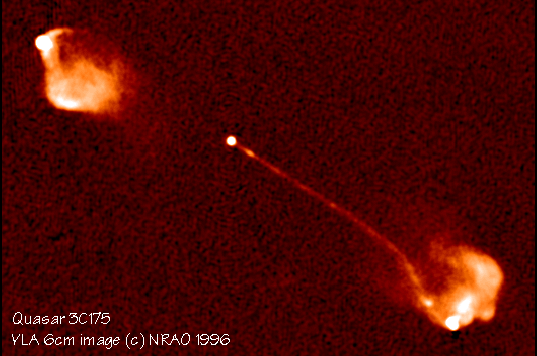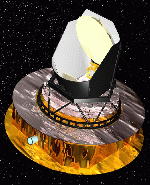PLANCK -the key to understanding the Universe |
 |
Suomeksi
PLANCK -the key to understanding the Universe |
 |
| The 3 Kelvin Cosmic Microwave Background (CMB) radiation surrounds us like a photograph of the young Universe. It's a remnant of the moment when the opaque photon-baryon plasma turned transparent and radiation (photons) decoupled from matter (baryons and dark matter particles). At that moment, when the Universe was only 300 000 years old, the photons scattered for the last time, and ever since have continued their journey unaltered towards us. The temperature of the radiation gradually decreased and is currently about 3 Kelvins -almost a perfect black body spectrum. The radiation is generated at microwave (radio) frequencies. However, the CMB is not smooth but contains tiny irregularities. These anisotropies hold the key to the yet unsolved mysteries of our Universe (such as its age, the Hubble constant, and the nature of dark matter) and can help to define the conditions of its birth, and, for example, assist in studying theories of galaxy formation. COBE satellite was the first to measure the cosmic microwave background radiation in a proper way in 1992. The resolution was very low and the results more or less vague. The Wilkinson Microwave Anisotropy Probe (WMAP) has recently mapped the sky in more detail, however, still leaving many questions unanswered.
Planck satellite, developed by the European Space Agency ESA and scheduled for launch in February 2008, will study these tiny temperature differences more accurately than any other instrument before. To do so, the satellite must measure the whole sky. This means that it will observe all sources emitting at radio frequencies, also the ones in front of the microwave background. As a by-product we will get valuable data also of radio galaxies, interstellar gas and dust clouds, and pulsars.
|
 |
 (Kuva: VLA/NRAO) |
The researchers in Metsähovi and Tuorla study active galactic nuclei (AGNs) and quasars. They are very distant but powerful galaxies like our own Milky Way. The difference is that compared to the Milky Way, quasars radiate enormously more especially at radio frequencies. The black hole that is situated in the centre of the active galaxy, swallows up gas, dust, and stars falling from the surrounding galaxy, and burps up radio emission either continuously or as variable outbursts. |
in Finnish
| We are also developing a software package called Quick Detection System (QDS) which will
enable us to get our hands on the Planck extraglactic radio
source data in about a week or two after the observation. This
work is conducted in cooperation with the Planck LFI Data
Processing Centre (DPC).
We are also helping with several other Extragalactic Point Sources Working Group (WG 6)
tasks, such as preparing the pre-launch catalogs and modelling of
sources. |
 |